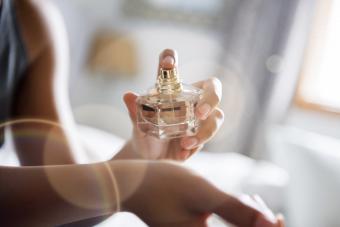
Whether you choose to give your skin that coveted glow by soaking up the rays or slathering on tanning lotion, chances are you're also familiar with the indoor tanning phenomenon.
The Indoor Tanning Phenomenon
Many people - men and women, young and old - consider indoor tanning a crucial part of their regular beauty regimen. It offers a convenience that outdoor tanning does not. Perhaps the most obvious benefit is the fact that it can be done no matter what outdoor conditions are like. Buckets of rain might be angrily hitting the pavement, but that won't prevent an indoor tanning aficionado from achieving a glow.
How it Works
A tanning device, such as a tanning bed, is used to emit long-wave (UVA) light sources to the front and back of the body. The bed is similar to a clamshell, allowing the tanner to lie flat on its Plexiglas surface.
Candidates for Tanning Indoors
Medical professionals may advise certain individuals not to tan indoors. Skin types, which help indoor tanning salon professionals determine optimal tanning times, are generally divided into six categories. The skin type also assists the salon professional in determining whether indoor tanning is an appropriate choice for the individual. The following list outlines the six skin types and their characteristics:
Skin Type I
Characteristics: White, pale, bright skin; light eyes; red hair; freckles. Tanning Factor: Skin Type I individuals should avoid tanning at all costs; these individuals typically burn easily but do not tan, even outdoors.
Skin Type II
Characteristics: Beige-tone skin; light or grey eyes; light to light brown hair; some freckles. Tanning Factor: Skin Type II individuals possess a tendency to burn, but occasionally will tan. Be cautious about tanning if this skin type applies to you.
Skin Type III
Characteristics: Light brown skin; brown eyes; brown hair. Tanning Factor: Skin Type III individuals always tan outdoors, and will occasionally burn.
Skin Type IV
Characteristics: Light brown to olive skin; dark brown eyes; dark brown hair. Tanning Factor: Somewhat similar to Type III individuals, people with Skin Type IV also tan outdoors with ease, and may occasionally experience burns.
Skin Type V
Characteristics: Brown skin; dark brown hair; dark brown eyes. Tanning Factor: Skin Type V individuals rarely experience sunburns. They tan easily.
Skin Type VI
Characteristics: Black skin; black-brown eyes; black-brown hair. Tanning Factor: Skin Type VI very rarely experience sunburns.
Know The Facts
The Food and Drug Administration (FDA) and the Federal Trade Commission (FTC) are both responsible for regulating tanning devices and sunlamps. The FTC offers several specific guidelines designed to protect tanners. These guidelines also serve as rules for salon professionals to adhere to. Violations of these rules can result in physical harm to the tanner; likewise, it can also result in corrective action against the tanning facility.
Knowing what to expect when you first visit a tanning salon will make the process smooth and easy. It will also arm you with the knowledge necessary to be a safe, protected tanner. Your salon professional should also be aware of these guidelines. If he or she is not, it is best to shop around for a location that carefully adheres to the rules.
Skin Type Exposure Limits
Based on your specific skin type, the salon professional will determine the exact exposure time that is appropriate for you. Typically, the tanning device will feature a timer that signals when the specified period of exposure is completed. The FTC makes note of the following points:
- Age is an important factor when it comes to burning. It has been suggested that children and adolescents are more susceptible than adults to burns from UVB rays of equivalent amounts.
- Skin problems will develop earlier in life if the individual begins tanning early in life.
Eye Protection
It is absolutely crucial to protect the delicate eye area when tanning. Items like towels, ordinary sunglasses and scarves are not sufficient in protecting the area; federally compliant eyewear, such as goggles, is considered appropriate. Neglecting to protect the eyes during indoor tanning may result in any of the following serious conditions:
- Sunburn of the cornea
- Cataracts
- Cornea damage
- Abnormal tissue growth
Your Health
It is important to consider your medical history and any existing health issues prior to visiting a tanning salon. Individuals receiving treatment for diabetes or lupus, or those susceptible to cold sores, are not good candidates for indoor tanning. Ultraviolet rays can aggravate these conditions, and might cause extra skin sensitivity for those who use certain medications.
Potential Dangers
Though it may seem like the safe alternative to lying out in the sun, the truth is that indoor tanning is no less dangerous. It also poses many of the same threats that outdoor tanning does, including the following:
- Skin cancer
- Damage to the immune system
- Premature aging
To Tan or Not to Tan
There is no doubt that the indoor tanning phenomenon is huge. However, in a day and age when skin cancer is more prevalent than ever before, it is important to be aware of the threats and potential consequences of tanning indoors. Knowing your skin type and the FTC's guidelines is crucial. If you are unsure whether you are a prime candidate for indoor tanning, consult with a dermatologist.
Related Makeup Articles
- Black Onyx Tanning Lotion
- Spray Tan
- Reviews of Vita Matrix Self Tanning
- Bronzers
- Spray Tanning







